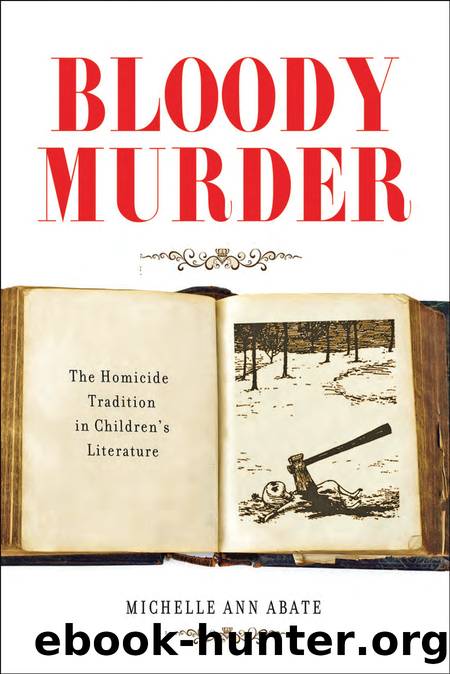Bloody Murder by Michelle Ann Abate

Author:Michelle Ann Abate
Language: eng
Format: epub
Publisher: Johns Hopkins University Press
Published: 2013-01-15T00:00:00+00:00
Searching for the Girl behind the Girl Sleuth: Eugenie Dennis and Nancy Drew
Arthur Prager, in Rascals at Large; or, The Clue in the Old Nostalgia (1971), has written about the ahistorical quality of the original Nancy Drew novels. From the very first volume through the dozens of subsequent narratives that comprise the series, he argues, âthe books have an odd, timeless quality. ⦠Like the land of Oz, Nancy Drew Country is in another time dimension, untouched by the outside worldâ (76). Prager elaborates: âThe Depression came and went, followed by three wars, but they were passed unnoticed in Midwestern, suburban River Heightsâ (76). Deborah L. Siegel echoes this observation. Commenting on the tremendous popularity of the mystery stories both in the 1930s when they were initially published and on the eve of the new millennium when she was writing, Siegel asserts that âthe appeal and the allure of Drewness thus lay in its extreme ahistoricityâ (164).
The paranormal elements permeating The Mystery of the Ivory Charm call this belief into question. Far from existing outside of history, the books are heavily influenced by at least one phenomenon permeating their era: popular interest in the supernatural. While the Nancy Drew series is commonly seen as being written during the heyday of mystery fiction in the United States, it was also conceived during a time of tremendous public fascination with ESP. In 1930, the same year that the first novel about the girl sleuth debuted, the psychology department at Duke University made history by becoming the first academic institution to begin researching paranormal activity. Four years later, Duke psychologist J. B. Rhineâwho is regarded as âthe founder of modern parapsychologyâ (Renier 28)âpublished Extra-Sensory Perception. The volume provided a detailed discussion of Rhineâs research methodology, experiments, and findings.
Based on the strength of the initial work by Rhine and his colleagues, in 1935, Duke University formalized its commitment to the paranormal when it founded the Parapsychology Laboratory. Within two years, C. E. Stuart and J. G. Pratt had released A Handbook for Testing Extra-Sensory Perception (1937). As Rhine remarks in the foreword to the text: âFew books have been written, I believe, in response to a more definite demand than lies behind this one. For the last few years there has been a mounting interest in the subject of ESPâ (7). As he goes on to explain, this fascination emanated not simply from the professional sector but the popular one:
Our mail [at the Parapsychology Laboratory] has been larger and larger every year, and in response to the thousands of requests for further information and suggestions we have mailed out a great many packs of test cards, record sheets, and sets of mimeographed instructions on how to test for ESP. But this demand has continued to increase to the point where a university laboratory ⦠can no longer cope with it. (7)
A Handbook for Testing Extra-Sensory Perception, he explains, serves this purpose by making public the research methods used at Duke.
For some individuals, testing paranormal powers was moot, for they were already assured that such abilities existed.
Download
This site does not store any files on its server. We only index and link to content provided by other sites. Please contact the content providers to delete copyright contents if any and email us, we'll remove relevant links or contents immediately.
4 3 2 1: A Novel by Paul Auster(11793)
The handmaid's tale by Margaret Atwood(7453)
Giovanni's Room by James Baldwin(6811)
Big Magic: Creative Living Beyond Fear by Elizabeth Gilbert(5358)
Asking the Right Questions: A Guide to Critical Thinking by M. Neil Browne & Stuart M. Keeley(5357)
Ego Is the Enemy by Ryan Holiday(4959)
On Writing A Memoir of the Craft by Stephen King(4666)
The Body: A Guide for Occupants by Bill Bryson(4586)
Ken Follett - World without end by Ken Follett(4447)
Bluets by Maggie Nelson(4262)
Adulting by Kelly Williams Brown(4235)
Eat That Frog! by Brian Tracy(4149)
Guilty Pleasures by Laurell K Hamilton(4120)
White Noise - A Novel by Don DeLillo(3830)
The Poetry of Pablo Neruda by Pablo Neruda(3818)
Fingerprints of the Gods by Graham Hancock(3738)
Alive: The Story of the Andes Survivors by Piers Paul Read(3731)
The Book of Joy by Dalai Lama(3699)
The Bookshop by Penelope Fitzgerald(3619)
